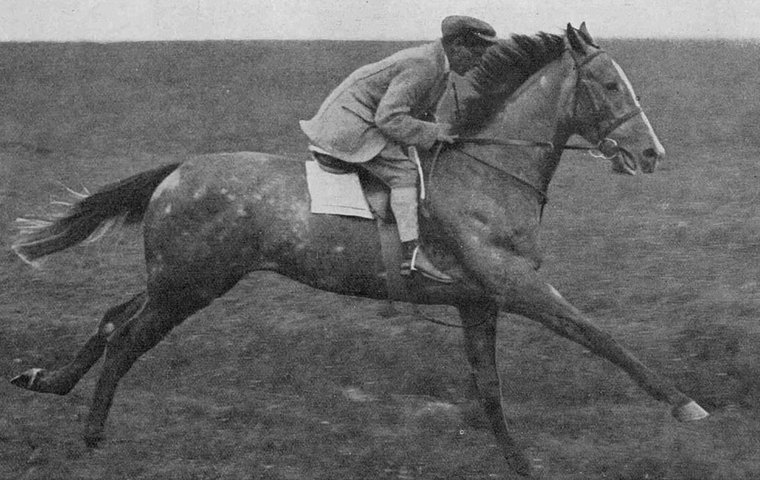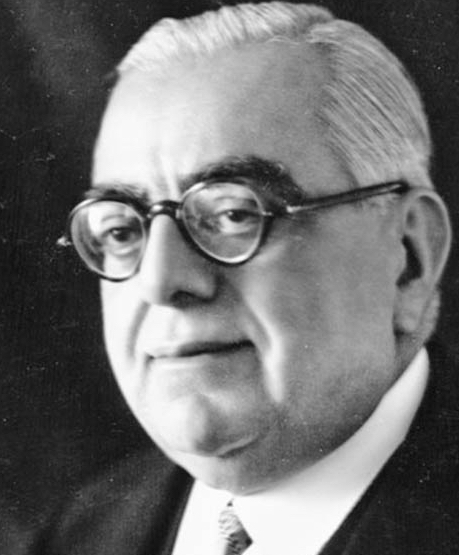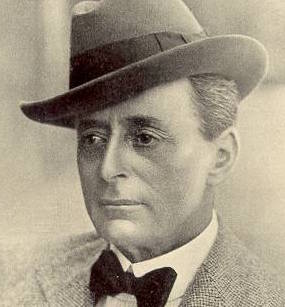
Some might argue that, in the Thoroughbred industry, 1921 paled in comparison to its predecessor.
The previous year, a massive chestnut comet called Man o’ War blazed through the sky; now, Grey Lag and Exterminator battled for dominance. English 2000 Guineas victor Craig An Eran proved the best of his crop, but Europe’s best, Ksar, flubbed the Grand Prix de Paris before taking the Prix de l’Arc de Triomphe. Yet a catalyst for greatness was put in place that year, thanks to two like-minded legends: The Hon. George Lambton and His Highness the Aga Khan.
 The third Aga Khan (left) raced horses in his native India, sharing in his memoir how much his family cherished horseracing. But everything changed when he attended a meal at the home of Mrs Edwin Montagu, whose husband, the secretary of state for British India, he knew well.
The third Aga Khan (left) raced horses in his native India, sharing in his memoir how much his family cherished horseracing. But everything changed when he attended a meal at the home of Mrs Edwin Montagu, whose husband, the secretary of state for British India, he knew well.
Among the other well-heeled guests was Katharine Asquith (née Horner), daughter-in-law to former Prime Minister H.H. Asquith - and sister of Cicely Lambton, wife to trainer George. Katharine and the Aga Khan bonded over racing; she suggested he contact her brother-in-law about starting his own stable.
 Lambton (left) was riding high, training for Edward Stanley, the 17th Earl of Derby. Unable to commit to conditioning another owner’s horses, he joined the Aga Khan’s advisorial team, which would eventually include Colonel Vuillier, Lord Wavertree, and William Duke.
Lambton (left) was riding high, training for Edward Stanley, the 17th Earl of Derby. Unable to commit to conditioning another owner’s horses, he joined the Aga Khan’s advisorial team, which would eventually include Colonel Vuillier, Lord Wavertree, and William Duke.
First a jockey, Lambton began training for Frederick Stanley, 16th Earl of Derby, in 1893. Their fruitful partnership yielded the likes of star fillies Canterbury Pilgrim (whom Lambton dubbed “the foundation stone of Lord Derby’s Stud”) and Keystone II (one day after she was foaled, Lambton quipped, “There is an Oaks winner, if I ever saw one”). In 1908, Lord Derby died, succeeded by Edward. With both men, Lambton had access to Britain’s best-bred youngsters.
Many cornerstones of the modern Thoroughbred owed their first careers to Lambton. For Lord Derby, Lambton and bloodstock advisor Walter Alston bought the stakes winner Bromus. Her son Phalaris, whom Lambton said had “absolutely first-class speed” and “an excellent constitution”, is the tail-male ancestor of most modern sire lines.
Lambton sent out some of Phalaris’s best sons, including full brothers Pharos and Fairway. Pharos sired the all-time great runner and sire Nearco and Prix du Jockey Club victor Pharis. Five years after Pharos’s birth, St Leger winner Fairway came along. A 4-time British leading sire, Fairway got two Derby winners and good miler Fair Trial, whose bloodlines successfully migrated to the Southern Hemisphere.
Another pair of full brothers were Sickle and Pharos. Among the best of his crop at two, Sickle proved a genetic goldmine. A son of Phalaris, classic-placed Sickle was the first foal out of champion Selene. Joseph E Widener leased Sickle after Lord Derby stood the horse for a year; in 1932, Widener exercised an option to buy the horse for $100,000. Sickle led the American sire list twice and became the grandsire of fleet-footed Classic winner Polynesian, sire of indelible superstar Native Dancer.
A year after Sickle, the diminutive Selene dropped his full brother, Middle Park Stakes hero Pharamond II. Lord Derby offered Pharamond for sale for £10,000 ($50,000); among those who came to inspect him was Keeneland innovator Hal Price Headley. Abram Hewitt reported that Headley didn’t even ask Pharamond II to be brought out of his stall, in order to prevent Lord Derby from discerning the degree of Headley’s interest. Obtaining Pharamond II for less than half the asking price, Headley bred his prize mare Alcibiades to his new acquisition; the future blue hen yielded champion Menow, sire of Horse of the Year Tom Fool.
And, of course, Lambton conditioned Selene’s Gainsborough colt, the 15-hand-and-1½ inch Hyperion.
After romping in the 1933 Epsom Derby, Hyperion rattled off victories in the Prince of Wales’s Stakes and St Leger. Perhaps Lambton’s last great horse for Lord Derby - Colledge Leader took over for Hyperion’s 4-year-old season - he eventually led the English sire list six times. Among Hyperion’s best runners were Kentucky Derby winner Pensive, Epsom Derby winner Owen Tudor, and top American sires Heliopolis, Alibhai, and Khaled.
Lambton also got his hands on half-siblings Swynford and Chaucer, both sons of the aforementioned Canterbury Pilgrim. In 1900, the horseLambton called a “wonderful little mare” produced a St Simon son, Chaucer. Hampered at 3 by pink eye running rampant throughout the shedrow, Chaucer didn’t prove an outstanding runner, but his daughters included Selene.
In 1907, Canterbury Pilgrim dropped a John o’ Gaunt colt, Swynford. Dubbed “a very ugly customer” by Lambton, Swynford turned out “strong as a bull, and full of courage”, taking the St Leger. Sire of six Classic winners, Swynford got blue-blooded Blandford - sire of four Derby winners, including standout stallion Blenheim II and Triple Crown winner Bahram - and leading American sires St Germans and Challenger II.
Regal name
Years later, Lambton would tap back into these rich wellsprings for the Aga Khan. Noted Robert Charles Lyle in The Aga Khan’s Horses: “Indeed, through his agent, George Lambton, he had expended by the end of 1924 over £100,000 on bloodstock. Many other wealthy men had in the past spent money freely in an effort to secure fame on the turf, but few of them had succeeded in their quest. The Aga Khan would be the first to acknowledge the discrimination with which George Lambton had spent his money.”
Lambton paid 24,520 guineas for eight yearlings at the 1921 Doncaster sales, said Peter Williett in Makers of the Modern Thoroughbreds. He spent 5,000 guineas on Cos, “a beautiful filly”; he trained July Cup and 1000 Guineas winner Diadem, who shared a second dam with Cos. Soon Cos rewarded her new owner by capturing the 1922 Queen Mary Stakes, The Aga Khan’s first British stakes victory.
Cos foaled 1930 Eclipse Stakes victor Rustom Pasha and 1928 Middle Park Stakes winner Costaki Pasha. Another close relative was Diophon, one of the Aga Khan’s first British Classic winners, who outran his straight forelegs to capture the 1924 2000 Guineas. Another 1921 purchase was Voleuse, who cost 420 guineas; a speedy juvenile, she produced 5-time leading Japanese sire Theft.
At the 1922 Doncaster sales, Lambton spent 9,100 guineas for a daughter of The Tetrarch. He called the gray filly “one of the best animals I ever saw in my life”. The Aga bestowed upon her the regal name Mumtaz Mahal, after the beloved consort of Mughal emperor Shah Jahan, but on the track, she was known as the “the Flying Filly”.
While giving a stablemate 28lbs, Mumtaz Mahal beat her competitor by half a furlong, shocking trainer Dick Dawson so much he nearly fell off his hack. Britain’s top 2-year-old filly of 1923, Mumtaz Mahal outclassed her stablemates, including fellow Lambton purchase Salmon-Trout. Also by The Tetrarch, the Aga Khan’s Salmon-Trout was precocious enough to take the Dewhurst Stakes at 3 and stayed to win the St Leger at 3.
Mumtaz Mahal’s legacy is alive and well. Her Blenheim II filly Mumtaz Begum produced the bullish but brilliant Nasrullah to the cover of Nearco. Sold to Joe McGrath in Ireland before being exported to Claiborne Farm, Nasrullah led the British sire list once and the American list five times.
Enter ‘Bull’ Hancock
By this time, Americans were eying European studs for their mares. As a Princeton University student, Claiborne Farm maestro Arthur ‘Bull’ Hancock bred fruit flies, observing that the greater the genetic diversity, the more energy the flies had. He applied the resulting theory, called ‘hybrid vigor’, to breeding Thoroughbreds, importing European bloodlines to contrast with, and complement, American ones.
Sent to Nearco, Mumtaz Begum’s Solario filly Sun Princess foaled Queen Anne Stakes winner Royal Charger. Edward L Bowen noted Royal Charger was “a nice sort of colt with a wonderful pedigree”, but “like Phalaris and Nasrullah, he was better at siring racehorses than being one”.
Retiring to the Irish National Stud, Royal Charger migrated to Spendthrift Farm. His 59 stakes winners included champions Idun, Royal Native, and Mongo, as well as Turn-to, sire of Hail To Reason.
Mumtaz Mahal’s Gainsborough filly Mah Mahal produced a Bahram filly called Mah Iran in 1939; sent to Bois Roussell, Mah Iran foaled the excellent runner Migoli. Migoli sired Hall of Famer Gallant Man, himself co-bred by the Aga Khan.
In 1933, Mah Mahal foaled a colt by the Aga Khan’s Blenheim II, a paternal grandson of Swynford who outclassed stablemate Rustom Pasha to win the 1930 Epsom Derby. Named Mahmoud, the Blenheim II-Mah Mahal foal replicated his sire’s Classic success; meanwhile, His Highness sold Blenheim II for $250,000 to a Kentucky syndicate headed by Hancock.
Blenheim II’s 61 black-type winners include Triple Crown winner Whirlaway. Mahmoud stood for four seasons in Ireland before selling to C V Whitney for about $85,000, siring 70 stakes winners and the dams of 139.
Aga’s ‘mistake’ over Hitler
Lambton bought Teresina, “a beautiful mare”, for 7,700 guineas at the Doncaster sales. Winner of the 1924 Goodwood Cup, Teresina produced top American sire Alibhai (by Hyperion). The dynamic duo didn’t always agree; the Aga Khan favored a Tracery colt, whom Lambton deemed “too small and on the stocky side”. Sold elsewhere, the colt wound up being 1923 Epsom Derby winner Papyrus.
The family legacy continues today, in the capable hands of the third Aga Khan’s grandson, Aga Khan IV (né Prince Karim). But the legacy of the third Aga Khan is disputed by turf writers.
As John Randall recalled, he was said to have “deprived British breeders of the services of many top stallions”, which “hastened America’s subsequent domination of international breeding”. The Aga Khan did sell most of his good colts; first went Blenheim, then Bahram and Mahmoud, Nasrullah and Tulyar. But most of these sales were financially necessary, His Highness admitted.
By 1940, the Aga Khan wound up stranded in Switzerland due to the war. Previously, he had associated with Hitler, believing, like Neville Chamberlain, that the Nazi leader could be appeased to ensure “peace in our time”. The pair even met, the Aga Khan even giving the Fuhrer “much food for thought”, according to Hitler’s secretary Christa Schroeder.
By Hitler’s 1939 military action, the Aga Khan had realized his mistake; he also needed cash immediately and either had to disperse his Irish nurseries or sell his stallions.
The Aga Khan III claimed to lack disposable income. In his memoir, he stated public conception of his wealth was vastly inflated, since much of his money went to the Ismaili community. Aga Khan IV has a more practical approach, as Milton Toby noted in Taking Shergar; he insisted the stud “pay its own way, without the infusion of outside capital”.
Still, Aga Khan kept many top-class fillies whose bloodlines still resound today. Moreover, he often kept his top colts in Britain or Ireland for a few seasons, meaning some of their stock still raced in Europe.
As for Lambton, perhaps his greatest legacy today is less tangible. He deemed the American-originated practice of doping with stimulants “a serious menace to horseracing”. He resolved to bring it to an end, especially after one horse ran into a stone wall after a race and died. Lambton told skeptical Jockey Club stewards he planned to dope his own horses to prove the practice’s harm.
Of five horses - all lackluster runners - receiving one dose each, four won and one finished second. Lambton’s daring experiment apparently worked; he recorded that, by the next year, “doping was made a criminal offence”.
Thus, Lambton apparently galvanized early attempts to prevent illegal substances being administered to British racehorses, a finger in the dyke of the tide of drugs.


